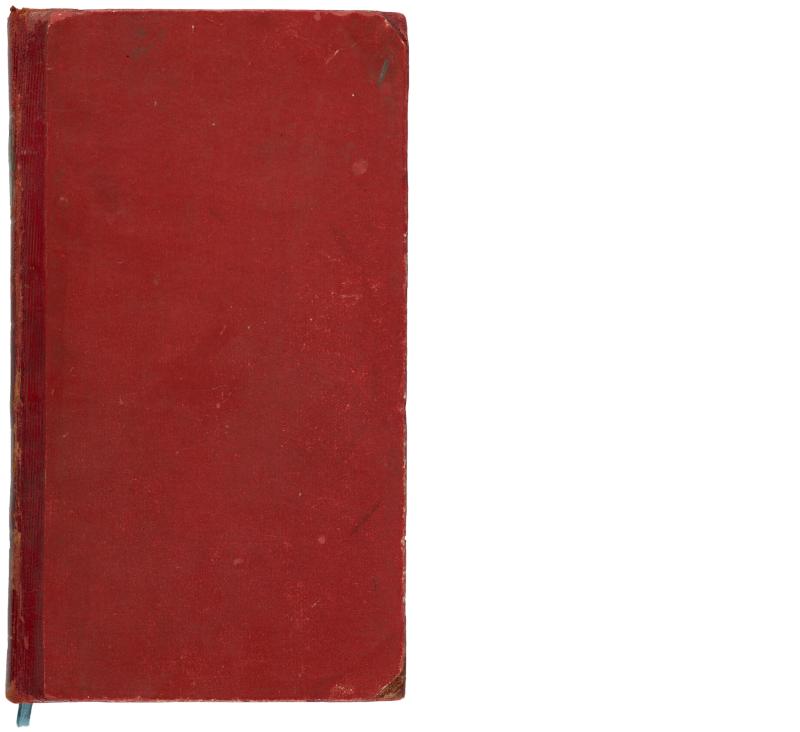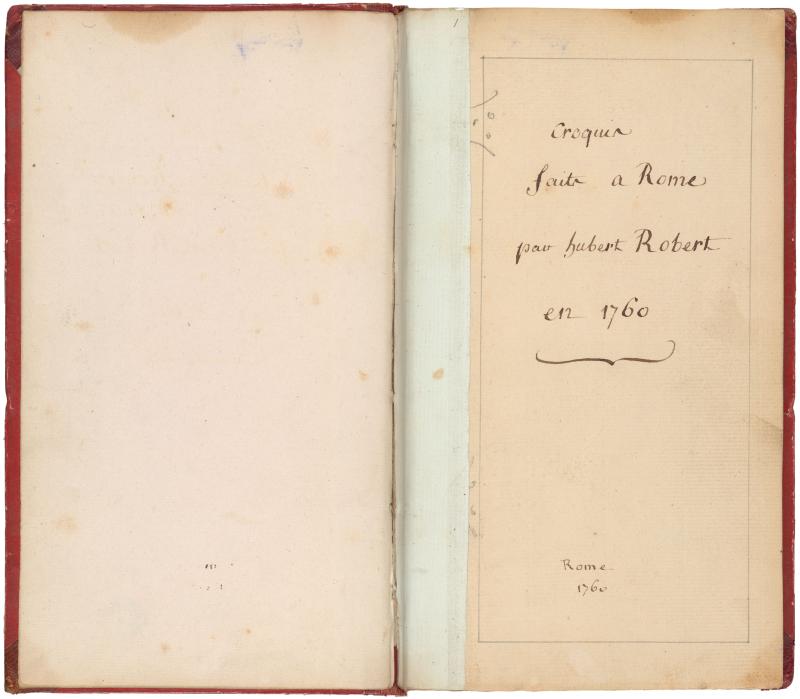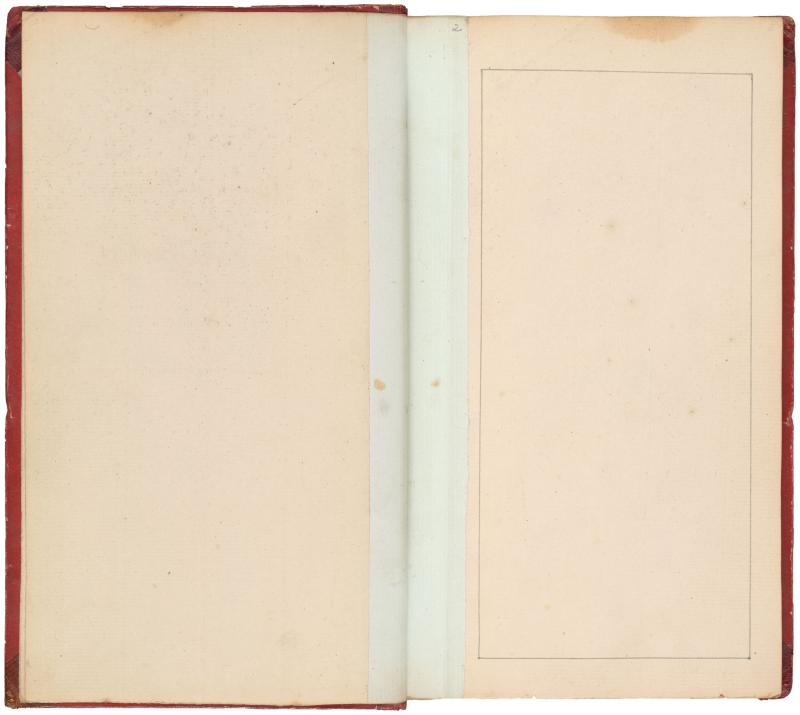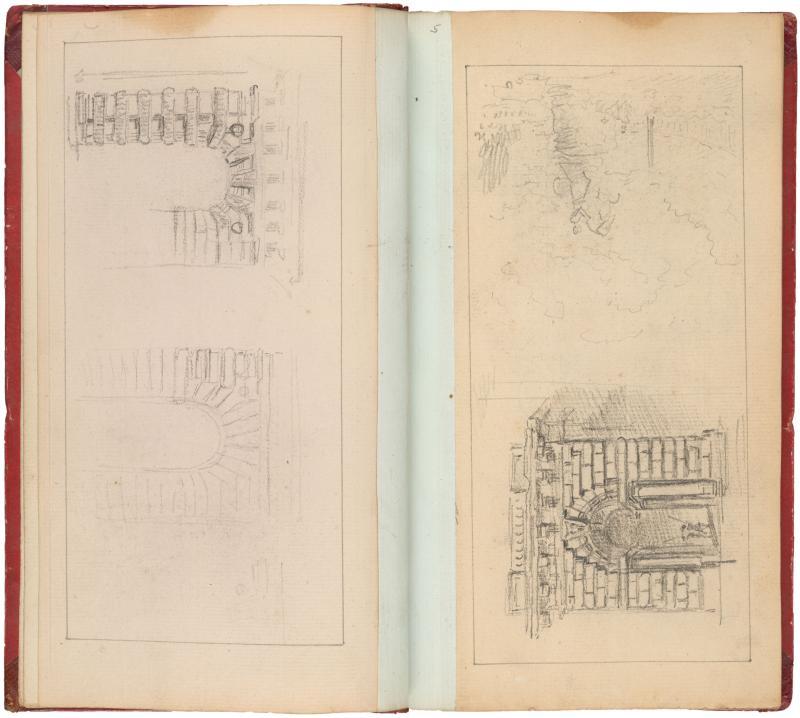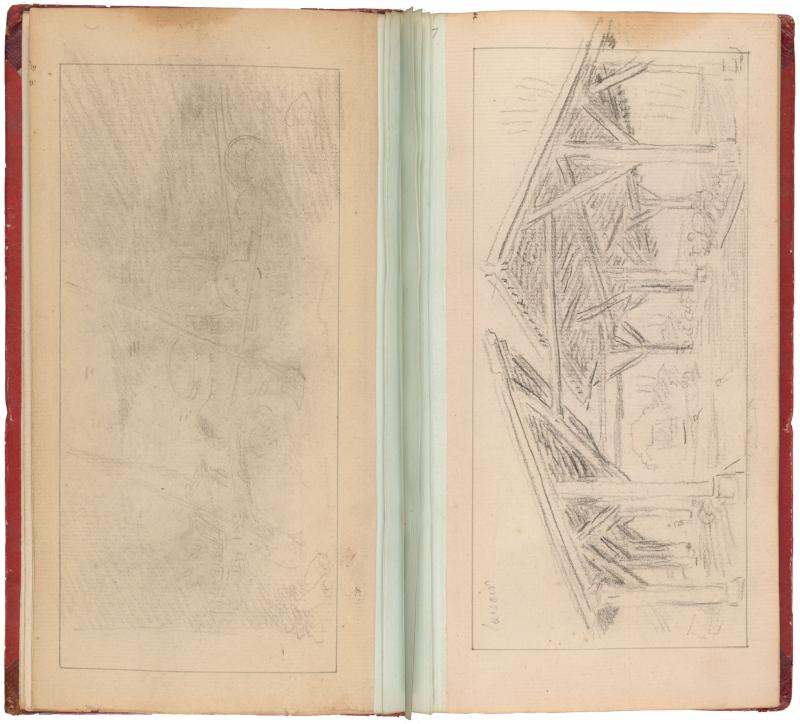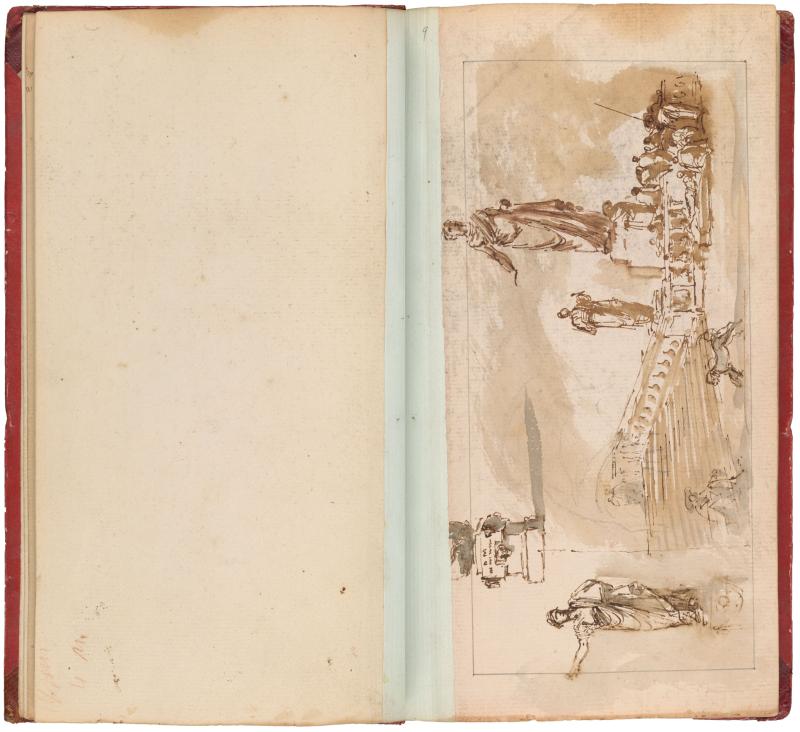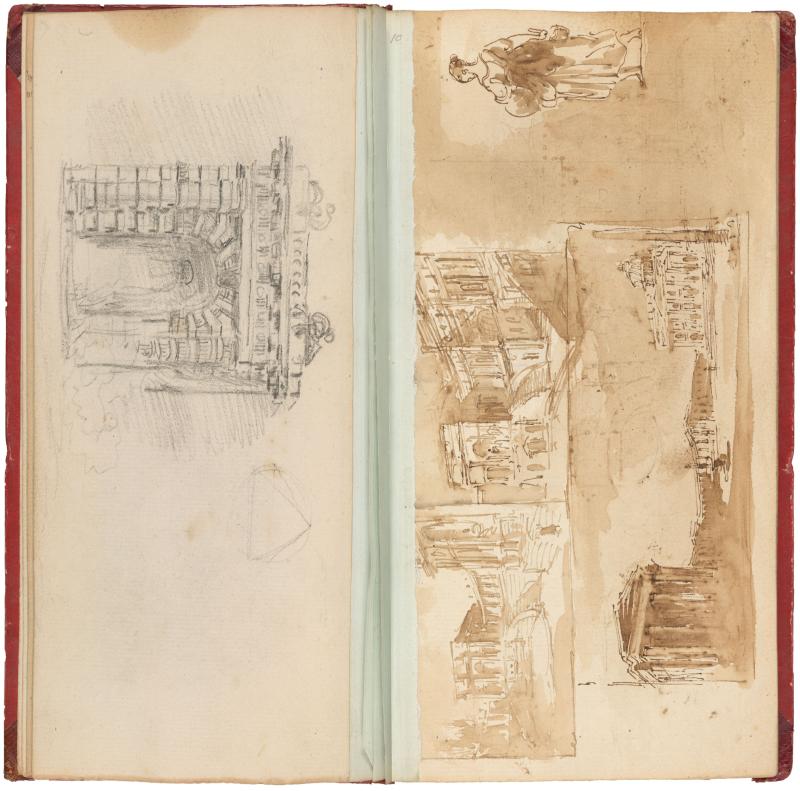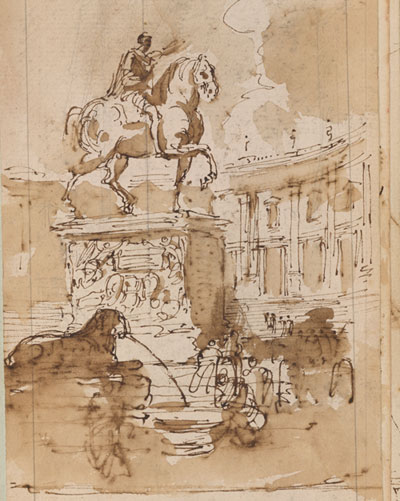
The most famous French landscape painter of the eighteenth century, Hubert Robert (1733–1808) spent eleven years in Rome from his early twenties to early thirties, and the sojourn left an indelible mark on his work. He drew in this sketchbook from 1760 to at least 1763, in the middle of his Roman residence.
This is one of only two surviving intact sketchbooks by the artist; the other is in the Louvre. Judging by this volume’s size (approximately nine by four-and-a- half inches), it may have been a pocket sketchbook. Robert first ruled borders in pen and gray ink on the pages and then drew, sometimes over the borders. He sketched primarily in pen-and-wash over chalk or graphite, often in chalk alone, and occasionally in water color. Pen-and-wash is not often seen in his oeuvre―which is primarily in red chalk―but he was a master of the technique. The sketchbook was rebound in red paper boards with a goatskin spine around 1800. Robert reoriented the pages from horizontal to vertical at this time and re-organized the book so that the most attractive drawings would fall on right-hand pages where the eye naturally goes, even though the new order sometimes divided panoramic images.
The most frequent subjects are architectural scenes with Roman monuments, which were often loosely based on reality, combined in fanciful ways, or entirely invented. The drawings show an initially tentative hand developing into a brilliant, assured artist. When he returned to Paris from Rome, he was still preoccupied with the Eternal City, so much so that he was called “Robert des Ruines,” (Robert of the ruins) and he continued to be influenced by scenes of Rome throughout his long career.

